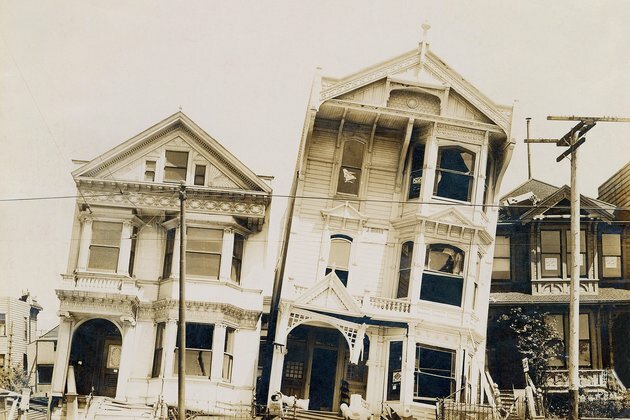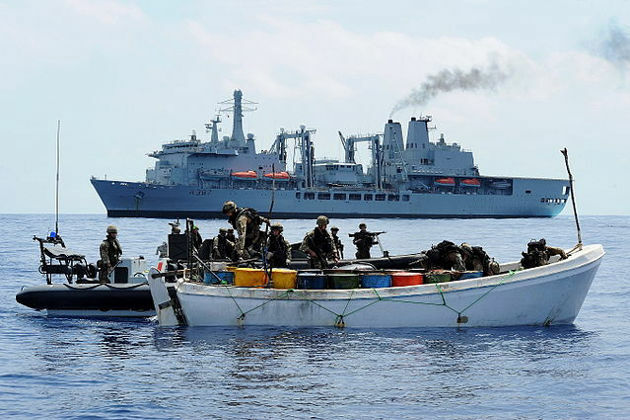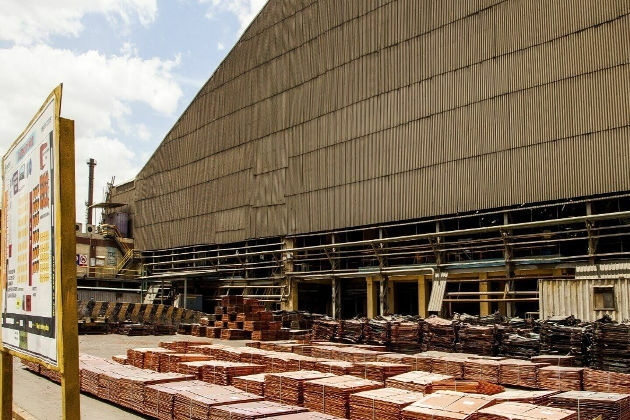A new earthquake warning system will prepare Canada for dangerous shaking
The Conversation
12 May 2022, 02:09 GMT+10

Large earthquakes can wreak enormous violence upon lives, livelihoods, infrastructure and the environment. High-density urban populations in the relatively small, seismically active areas of British Columbia and the Quebec City-Montreal-Ottawa corridor leaves residents extremely vulnerable to earthquakes.
A 2013 report commissioned by the Insurance Bureau of Canada notes that "a major earthquake would have a significant economic impact regionally, and cause a domino effect on the economy of Canada, with major impacts on critical infrastructure, such as roads, electricity, communication and agriculture, public assets, residences and much more."
It concluded that a 9.0-magnitude earthquake in British Columbia would rack up almost $75 billion in costs, and a 7.1-magnitude earthquake in the Quebec City-Montreal-Ottawa corridor would cost almost $61 billion.
Canada does not have an earthquake early warning system to provide alerts to the 10 million people who live in these areas - or a national education initiative to develop an earthquake-aware culture. But that will soon change.
10 million at risk
Canada's most active seismic zones fall into three main areas:
- Charlevoix-Kamouraska seismic zone, along the St. Lawrence River in southeastern Quebec.
- Cascadia Subduction Zone, stretching from the north end of Vancouver Island to Cape Mendocino, Calif., and connected to the Queen Charlotte Fault, from Haida Gwaii northward along the Alaska coast.
- Baffin Island and the Boothia and Ungava peninsulas in the Arctic, due to post-glacial rebound, where the ground slowly rises as glaciers melt.
Seismologists forecast significant shaking for Quebec (Montreal, Quebec City, Rivière-du-Loup), Ontario (Ottawa, Toronto) and British Columbia (Vancouver and Victoria) in the future. But earthquake prediction timelines are an imprecise science.
For example, the recurrence interval for a large earthquake in the Pacific Northwest is about 500 years - there have been seven in the past 3,500 years. Seismologists say there's a 30 per cent chance of a megathrust earthquake - a very powerful quake that occurs at a subduction zone - in this fault zone in the next 50 years. But earthquakes are quasi-random - they don't occur at regular time intervals.
Read more: Contrary to popular belief, Eastern Canada is more at risk of earthquakes than perceived
In my work with communities in New Zealand, Samoa and Nepal that have experienced lethal earthquakes, I've learned about individuals' heightened risk awareness after an earthquake. Their stories taught me that time lost is lives lost, and that those who took protective action survived.
This life-risk awareness is the foundation of an earthquake early warning system. With only seconds of advance warning, people can take protective action such as drop, cover and hold on. But developing an earthquake-aware culture can take time.
Earthquake-prone communities often experience fatalities, anxiety and fear, and widespread damage to homes, infrastructure and economies. A community with an earthquake-aware culture has grasped lessons from seismology, social science and economics, painfully aware of what damages and losses it might experience.
Developing an earthquake-aware culture relies on the data collected by seismologists. Their interpretations help us understand how local fault lines will shake during an earthquake, how often the shaking has occurred in a location and how fast the shockwaves might travel.
2024: All systems go
In March, Natural Resources Canada set up an earthquake-monitoring station at the Horseshoe Bay ferry terminal in West Vancouver, B.C., the first station in what will become a national early earthquake warning system by 2024.
The system uses the same software as the early-warning system located along the U.S. West Coast. It aims to reduce the number of injuries, the cost of damage and losses, and the impact to critical infrastructure operations.
Millions of people - and the Canadian economy - could benefit from the early earthquake alert system. Once it is fully operational, it should provide five to nine seconds advance warning to those in Haida Gwaii, Queen Charlotte and Masset, B.C., for ruptures in the Queen Charlotte Fault, and 43 to 91 seconds for the mainland towns of Bella Bella, Prince Rupert and Kitimat, B.C. In Quebec, a repeat of the 1988 Saguenay earthquake would offer 84 seconds advance warning for Montreal and 29 seconds for Quebec City.
Read more: Why some earthquakes are so deadly
How people will respond to the alerts remains unknown. But Natural Resources Canada has funded the University of Calgary to work with the U.S. Geological Survey and the Incorporated Research Institutions for Seismology to learn from their experience of building an earthquake-aware culture, as well as with other nations, including Japan, China, Turkey, Greece and Italy.
Challenges and next steps
By 2024, the Canadian earthquake early-warning system will have more than 400 land-based sensors deployed throughout Ontario, Quebec and British Columbia. It will send the alerts to radio, television, internet and cellular networks, allowing people to take action quickly.
The advance notice is meant to avert deaths. A mere 10 to 90 seconds warning could save lives, protect infrastructure and utilities. Researchers, however, still need a better understanding of how Canadians will respond to these alerts.
For example, Canada's earthquake hazard maps suggest there are two widely separated seismically active areas: one in Ontario, Quebec and New Brunswick, and the other in British Columbia. But each location will suffer different types of damage and losses after a large earthquake.
These maps give the erroneous impression that the earthquake risk applies to everyone equally. My preliminary research shows distinct geological, political, economic and emergency management contexts between Eastern Canada and Western Canada.
For example, those in Eastern Canada are very vulnerable to seismic hazards: The soft soils in the Charlevoix-Kamouraska seismic zone amplify ground motion and the heritage housing cannot withstand shaking. There's also low participation in earthquake preparedness exercises.
According to a 2017 report by Swiss Re, 65 per cent of home owners in Vancouver and Victoria have purchased residential property earthquake insurance. In contrast, in the Charlevoix-Kamouraska seismic zone, only two per cent of home owners in Quebec City and five per cent in metropolitan Montreal have residential property earthquake insurance.
The ultimate goal of the earthquake early warning system is to ensure that those most at risk - the disabled, elderly, very young, caregivers and those living in remote rural areas - have practical knowledge of what to do - and what not to do - during an earthquake.
Author: Shona L.van Zijll de Jong - Adjunct Professor, Geological Sciences and Engineering, Queen's University, Ontario 
 Share
Share
 Tweet
Tweet
 Share
Share
 Flip
Flip
 Email
Email
Watch latest videos
Subscribe and Follow
Get a daily dose of Vancouver Star news through our daily email, its complimentary and keeps you fully up to date with world and business news as well.
News RELEASES
Publish news of your business, community or sports group, personnel appointments, major event and more by submitting a news release to Vancouver Star.
More InformationInternational
SectionSources: Meta won’t alter data model, faces fresh EU charges
BRUSSELS, Belgium: Meta is holding firm on its controversial pay-or-consent model, a move that could lead to fresh antitrust charges...
Trump’s tariff push could push US rates above 20%, ICC says
LONDON, U.K.: American consumers and businesses could soon face the highest overall tariff burden in more than a century, according...
U.S. Urged to Investigate After Israeli Settlers Beat Palestinian-American to Death
The family of Sayfollah Saif Musallet, a 20-year-old American citizen who was beaten to death by Israeli settlers in the occupied West...
New Hampshire federal court ruling defies Trump’s citizenship move
CONCORD, New Hampshire: A federal judge in New Hampshire issued a crucial ruling on July 10 against President Donald Trump's executive...
Houthis attack cargo ship in Red Sea, raising maritime safety fears
DUBAI, U.A.E.: A cargo ship flagged under Liberia, known as the Eternity C, sank in the Red Sea following an attack executed by Yemen's...
Trump administration restarts Ukraine arms deliveries
WASHINGTON, D.C.: The Trump administration has started sending some weapons to Ukraine again, just a week after the Pentagon told officials...
Business
SectionBitcoin soars to a record on Trump policies, institutional demand
NEW YORK CITY, New York: Bitcoin surged to a new all-time high this week, buoyed by growing institutional interest and a wave of pro-crypto...
Huawei eyes new buyers for AI chips amid U.S. export curbs
SHENZHEN, China: As global chip competition intensifies, Huawei Technologies is exploring new markets in the Middle East and Southeast...
U.S. food prices at risk as Brazil tariff hits key imports
LONDON/NEW YORK CITY: American grocery bills may be headed higher as coffee and orange juice prices face upward pressure from new tariffs...
WK Kellogg sold to Ferrero as food giants chase shelf power
BATTLE CREEK, Michigan: In a major consolidation of iconic food brands, WK Kellogg has agreed to be acquired by the owner of Ferrero...
Filmmaker joins biotech effort to bring back extinct giant bird
WASHINGTON, D.C.: Filmmaker Peter Jackson's lifelong fascination with the extinct giant New Zealand flightless bird called the moa...
India seeks WTO nod for retaliatory tariffs on US
NEW DELHI, India: India has submitted a revised proposal to the World Trade Organization (WTO) in Geneva to implement retaliatory tariffs...













